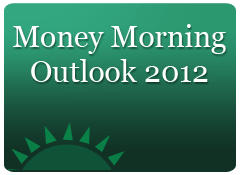On Wednesday, Fitch Ratings Inc. downgraded its credit ratings on five of Europe's biggest banks, and while that decision made headlines, it's not the most important story to come out of Europe this week.
The real story, which the mainstream media is neglecting, is that there are signs of an underground run on Europe's banks.
Almost nobody's talking about it, but there are indications money is already moving out of the European Union (EU) faster than rats abandoning a sinking ship.
Not through the front door, mind you. There are no lines, no distraught customers and no teller windows being boarded up – not yet, anyway.
For now the run is through the back door, and there are four things that make me think so:
- Italy's planned ban on cash transactions over 1,000 euros, or about $1,300.
- French, Spanish, and Italian banks have run out of collateral and are now pledging real assets.
- Swiss officials are preparing for the end of the euro with capital control measures.
- Europe's CEOs are actively preparing for the end of the euro despite governmental reassurances.
Signs of a Run
Let's start with Italy and Prime Minister Mario Monti's plans to restrict cash transactions over 1,000 euros (down from the current limit of 2,500 euros, or about $3,200).
Ostensibly the move is about reducing tax evasion by prohibiting the movement of large sums of cash outside the official transactional system, but I think it speaks to something far more sinister – namely that the Italian government knows things are going to get far worse than they're publicly admitting.
Consider: Cash is a stored value mechanism. There's not a lot of it because at any given point in time, most of it is on deposit with banks in any country. That's as true in Italy as it is here in the United States when real interest rates are positive during "healthy" times.
But when real interest rates turn negative, people are likely to withdraw cash and stuff it quite literally under mattresses or in coffee tins. (Real interest rates are the official lending interest rates as adjusted for inflation.)
In such an environment, holding cash in a bank becomes nothing more than an imputed tax and a disincentive for deposits. It's also a significant thorn in the side of central bankers who want to control their country's money supply, because cash can operate outside the system and, specifically, logjam reform efforts.
The reason is really pretty simple. If you have negative real interest rates, and cash transactions are largely restricted or removed altogether, then the only way to effectively use cash is to withdraw it and spend it… immediately.
In other words, by limiting cash transactions to 1,000 euros or less, Italy is putting into place a punitive financial control fully intended to keep money moving in a system lest it become worthless or worse – hoarded and worthless.
Now let's move on to banks.
Banking Breakdown
Many investors have never thought about it before, but there are really only three sources of funding for a bank:
- Money that's effectively "lent" to the bank by customers placing their assets on deposit;
- Short-term money market funds;
- And long-term bonds or securitized products based on long-term paper sold to bond investors.
Together, the three funding sources are like the legs on a stool – lose any one of them and the stool will topple over because it is no longer balanced. Cut the legs down and the stool collapses – that's what is happening now.

